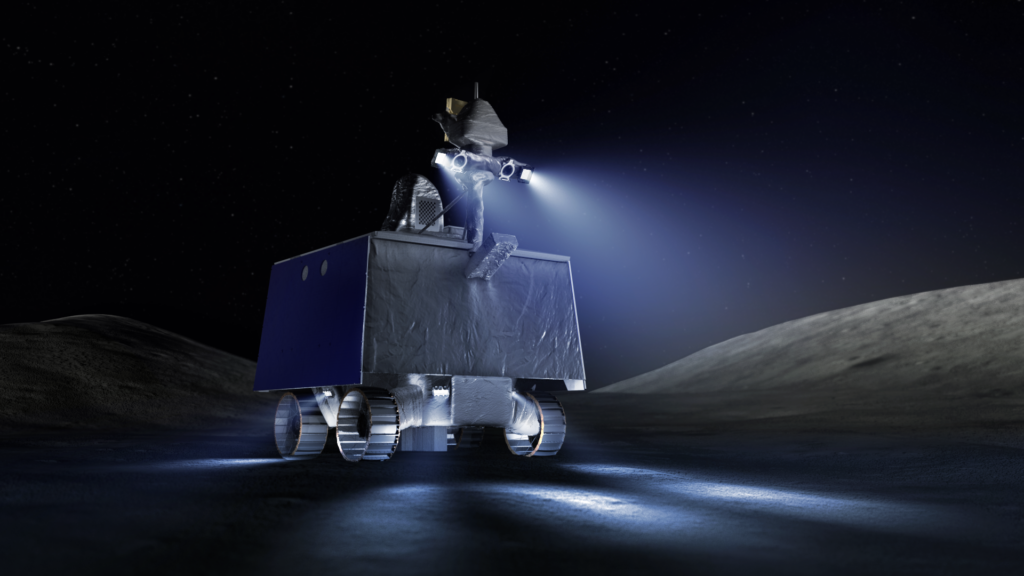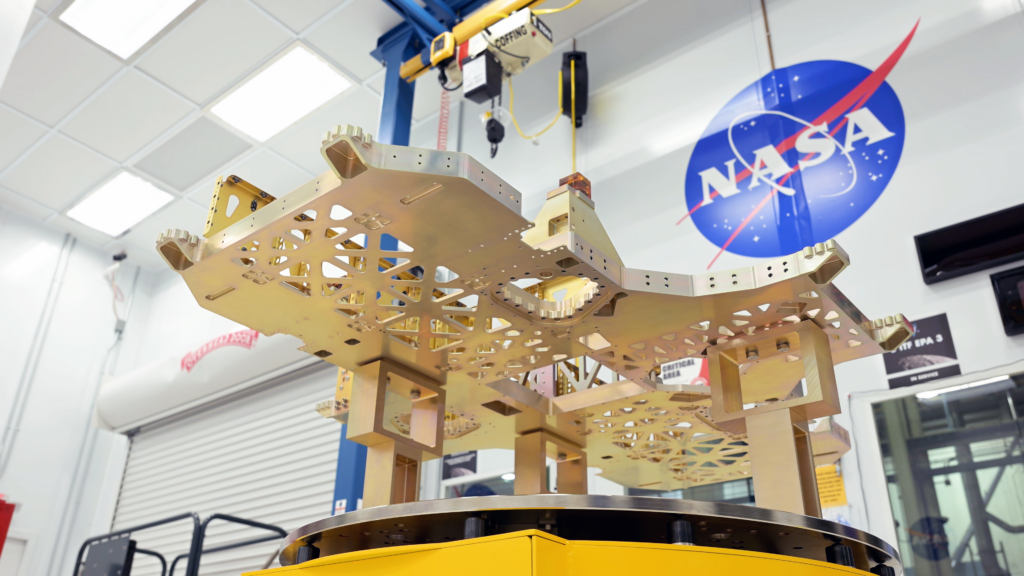NASA has begun construction of the VIPER spacecraft, which will be the first lunar rover in its history. This is stated in a message published on the website of the aerospace administration.
VIPER’s main tasks
The VIPER rover will have to land in one of the southern polar craters of the Moon. The main task of the spacecraft will be to study the regolith in order to determine the percentage of water ice in it. For this purpose, the lunar rover will be equipped with a drill that allows it to extract samples from a depth of up to a meter, and three scientific instruments. The NSS neutron detector will help to identify places of probable ice occurrence, the MSolo and NIRVSS spectrometers will help to determine the chemical composition of the regolith.

As for the dimensions, the length and width of the VIPER are 1.5 m, height — 2.5 m, weight — 450 kg. The spacecraft will move with the help of four wheels. Its maximum speed will be 0.72 km/h. To generate energy, VIPER will be equipped with solar panels capable of generating 450 watts. The energy stored during the lunar day will be used to keep the device from freezing during the long lunar night. The duration of the mobile laboratory should be at least 100 days.
VIPER Construction
In the summer of 2022, NASA reported on the successful completion of a series of “road” tests on an obstacle course simulating the lunar surface by the prototype of the lunar rover. They confirmed its ability to move around the terrain with difficult terrain.

This success allowed to move on to the stage of direct manufacture and assembly of the lunar rover. Operations are carried out at the Space Center named after Johnson. According to NASA, engineers recently connected the lower chassis plate and the lower parts of the frame, which will support the entire VIPER — from the wheels to the tips of the headlights.
Over the next few months, specialists will continue to “build up” VIPER, adding to it various subsystems responsible for avionics, power supply and navigation. Then scientific instruments and a drill will be installed on the rover, after which the device will undergo a series of tests designed to make sure that it can work on the lunar surface.
At the moment, the launch of VIPER is scheduled for November 10, 2024. The rover will be sent to the Moon by a Falcon Heavy rocket. The Griffin platform, built by Astrobotic, will have to land it on the western edge of the Nobile crater, located near the south pole of our planet’s moon.
According to https://www.nasa.gov
Follow us on Twitter to get the most interesting space news in time
https://twitter.com/ust_magazine

